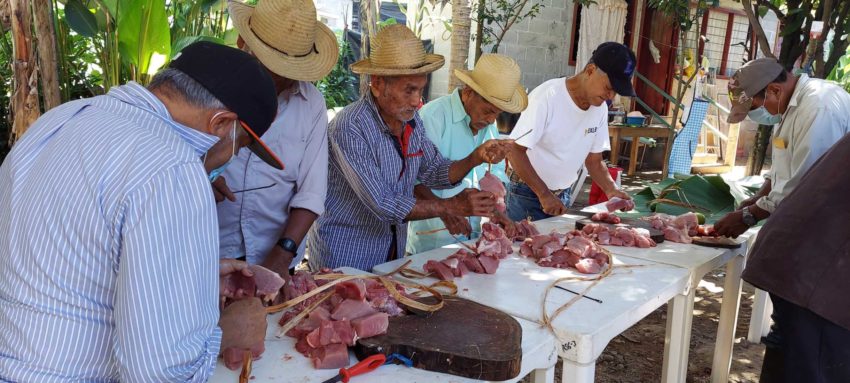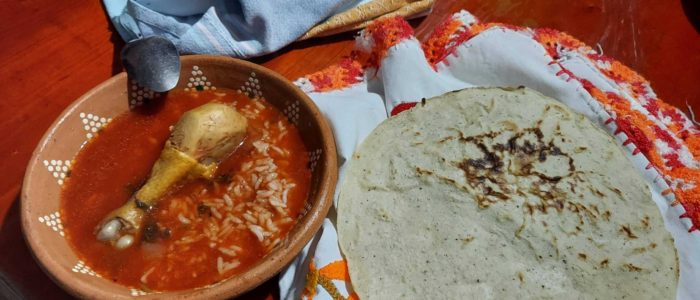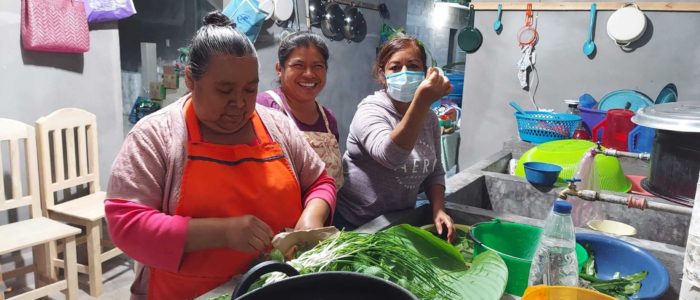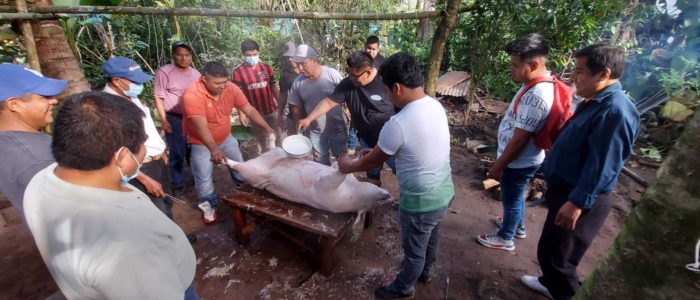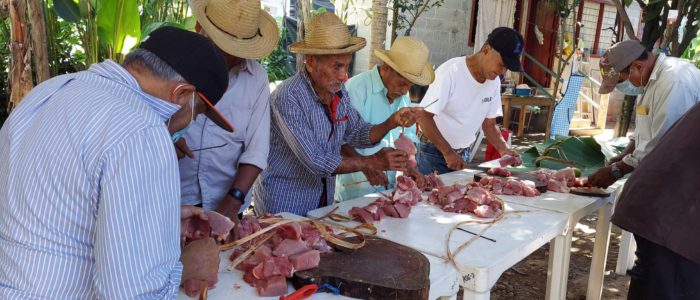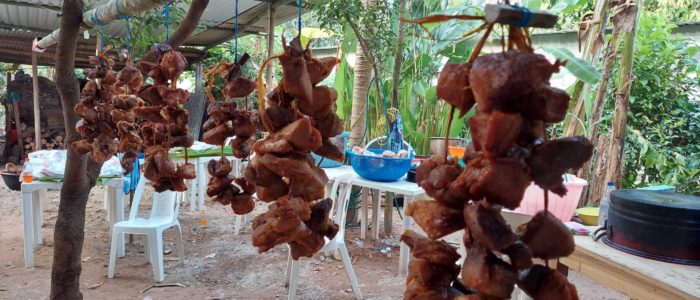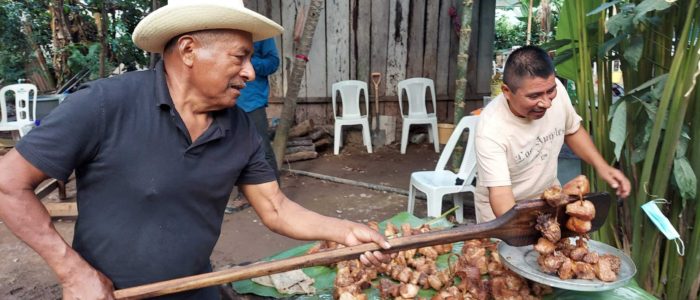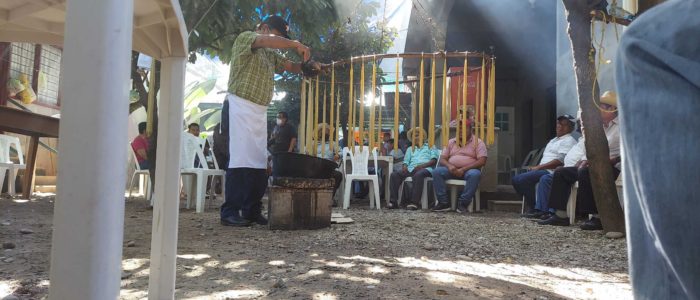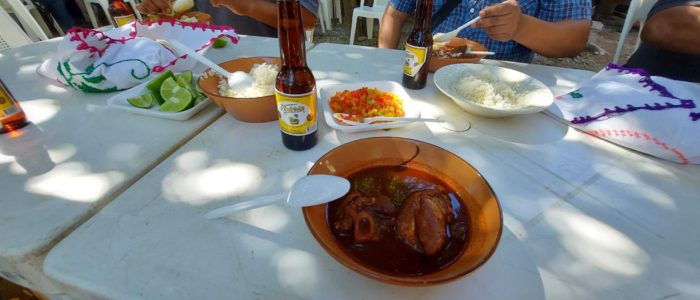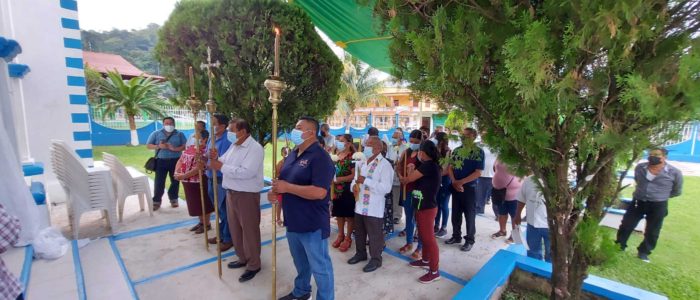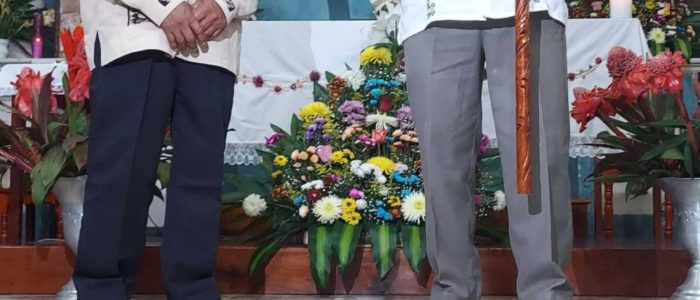When most folks think of Oaxaca, they think of mole, mezcal, and Día de los Muertos. As you may have noticed, we’re not most folks.
Don’t get me wrong: we’ve certainly partaken of plenty of mole and mezcal. We’ve also celebrated Day of the Dead twice in Oaxaca City. But our most recent visit to Oaxaca took us to an entirely different part of the state for an entirely different experience: Mayordomía del Pueblo.
To attend this three-day festival celebrating the annual “changing of the guard” for local officials in indigenous communities, we traveled to San Mateo Yetla, a 650-person pueblo in northwestern Oaxaca’s Sierra de Juárez mountains. This semi-autonomous region known as the Chinantla is the ancestral home of the Chinantec Indians, who have been practicing the same cultural traditions as their ancestors for centuries.
The annual Mayordomo fiesta is a key element of the cargo system, which requires citizens to hold a variety of formal positions in indigenous communities in parts of Mexico. These positions are unpaid, and the jobs range from taking care of community-owned cows to keeping the water running to serving as Alcalde (Mayor). Each year, the Mayordomo – the highest position in the system – hosts the entire town for a three-day retirement party. San Mateo Yetla’s fiesta includes food and booze, music and dancing, a candle-making ritual, and a religious procession followed by a ceremony in the local Catholic church, led by the Bishop.
While outsiders don’t typically attend these locally-focused events, our host, Don Floriano Garcia Delfín, assured us that we would be welcomed by his neighbors. Indeed, we were embraced immediately when we joined him in the backyard of the Mayordomo’s home on January 3, 2022, the evening before the festivities began. A dozen women greeted us warmly as they chopped herbs and vegetables at the outdoor kitchen to make caldo de pollo, a traditional chicken soup. Several men stopped to say “Buenas noches” before returning to their tasks of setting up plastic tables and lashing lengths of bamboo poles between trees. Four fattened pigs lounged in the shade, tethered to small trees by a short rope tied around a hind leg.
Day 1: The Pig Slaughter
When we returned the next morning, we watched as teams of 6-8 young men slaughtered and butchered each hog, dangling dismembered parts from the poles they had strung up the previous day. Like a well-oiled machine, they broke down each pig methodically, processing each whole animal into ingredients for carnitas, cueritos, chicharrones, and blood sausage.
While the women chopped the herbs and vegetables for caldo rojo, a traditional pork-based soup with a brick-red broth, a small crew of older men speaking Chinanteco cut and strung up chunks of shoulder meat using thin strips of bark, which another crew deep-fried in enormous metal pots perched over lumbres (wood-fire beds). When the carnitas were fully cooked, some were laid out to cool on a table top covered with a giant leaf cut from a nearby tree. Others were delivered directly to the women for use in the caldo rojo, which was bubbling in two oversized ollas (clay pots) set over lumbres on the edge of the outdoor kitchen. This caldo was to be eaten the second day. Meanwhile, I was summoned to yet another open-flame deep fryer in the yard, where cueritos (strips of pig skin) were being fished out of hot oil and cooled on leaves before being piled onto triple-layer stacks of hand-made tortillas for snacking.
As the men finished up the deep-frying and cleaned up the slaughter tables, the women began placing piping hot bowls of yesterday’s caldo de pollo in front of plastic chairs lining long tables, accompanied by family-style serving dishes of white rice, cloth-wrapped stacks of homemade tortillas, fresh lime wedges on plates, and small bowls filled with chopped onions and colorful peppers, including the murderously hot chiles de árbol. Before my soup bowl emptied, one of the women offered me a refill of broth from a big pot, which I eagerly accepted. Within seconds, a young man proffered a pony-bottle of room-temperature Victoria beer from a cardboard case. I nodded, and he popped the top off with a pocket knife before handing it over with a smile.
Day 2: Candle-making
The next day’s ritual focused on making candles for the church ceremonies. When we arrived, several older men were hanging a large circular rim from a tree, horizontal to the ground, at chest height. A sparse fringe of thick cotton candle wicks dangled to knee-level. For three hours, the elders poured melted beeswax down the strands individually, rotating the rim in a slow circle. While the taper candles were being poured layer by layer by one of the elder officials, a new batch of beeswax was being melted over a lumbre for the next layer, to be poured by a different office holder. At the end of each round, the outgoing and incoming Mayordomos added an even thicker layer of wax to a separate set of four, larger wicks, hanging from a bamboo pole nearby. When the process reached completion, the candles were removed from the rim, trimmed to a uniform size with a knife, bundled in white cloth, and hung from bamboo poles to await their religious duties.
The outgoing and incoming Mayordomos each delivered a short speech in Spanish and Chinanteco discussing the importance of community and tradition. Then, we sat down for a meal of yesterday’s caldo rojo with tortillas, rice, onions and peppers, lime wedges, and beer.
Around 5:00 pm, the candles were delivered to the church by a walking procession, where one pair of the larger Mayordomo tapers burned by the altar during Mass. Later, beginning at 10pm, a live band blasted la banda music in the municipal building while a few hundred community members mingled, danced, and drank beer until 3:00 am.
Day 3: The Changing of the Guard
Despite a community-wide case of la cruda (hangovers) the next morning, most of the town’s residents re-convened at the church just before noon to witness the presentation of the new slate of officials. The procession arrived on foot, accompanied by a marching band, with outgoing officials carrying wooden staffs, some tied with red or white ribbons and some adorned with fresh flowers. The cargo officials sat together at the front of the church, where the second pair of oversized Mayordomo candles burned continuously on either side of the aisle leading to the altar.
Following a short service and engaging sermon in Spanish by the Bishop, the officials were sworn in. Pairs of outgoing and incoming officials stepped onto the stage as they were summoned. For each position, the outgoing official said a few words, handed over the staff to their replacement, and the new official followed with a short statement. When the Mayordomos took the stage, the comments were made in both Spanish and Chinanteco, focusing on the continuation of their ancestors’ traditions as the lifeblood of the pueblo.
After the swearing in ceremony, a handful of young adults carried an oferta (offerning) of woven baskets and plastic crates filled with fruits and vegetables, which were left by the altar. Soon after, the ritual was over, and the congregation filed out into the sunshine.
San Mateo Yetla remained restful throughout the afternoon, until another live band struck up shortly after dark. This time the music was more subdued, and the party ended by 10:00 pm.
Our host, Don Floriano, told us he has held every position in the cargo system except that of Mayordomo. Now that he is over the age of 65, he is eligible to throw his hat in the ring for the position, which is voted on by community members. If and when his turn comes up, he will serve for a year before hosting and footing the bill for his own retirement party, which he estimates will cost 150,000 pesos, or about $7,500. We plan to return to honor him, and contribute to the cause.
